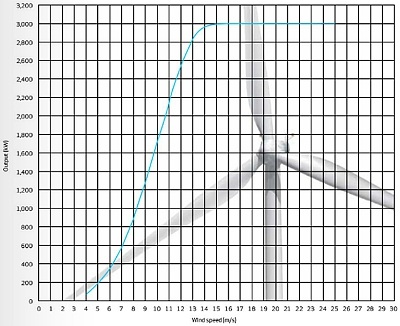Big wind: The significance of Macarthur
Two and a half years after construction began, the Macarthur wind farm in Victoria’s south-west now officially lays claim to the title of the Southern Hemisphere’s largest.
Opened by Victorian Premier Denis Napthine today, the $1 billion joint venture of AGL and Meridian Energy is nothing to be scoffed at.
With 140 turbines across 5,500 hectares and 420 megawatts of generating capacity, it is a gargantuan development in Australian wind.
It outstrips the previous largest development, AGL’s (to-date) four-stage Hallett development, by around 70 MW of capacity despite employing 27 fewer turbines. And it surpasses Infigen’s three-stage Lake Bonney, by 28 turbines and 141.5 MW of capacity.
Incidentally, Lake Bonney serves as a great comparison for how quickly wind turbines are developing.
In 2005, Lake Bonney 1 was commissioned with 46 1.75MW Vestas turbines in operation. Lake Bonney 2 and 3 followed in 2008 and 2010, with a total of 66 3MW turbines installed, again from Vestas.
The Lake Bonney 3MW turbine is equivalent to those used at Macarthur in terms of maximum capacity, but the newer version’s larger size help it achieve a considerable advantage in dealing with low wind speeds.
As our graphs of the week show, the Vestas V112 model used at Macarthur reaches the peak of the power curve at wind speeds of 12 metres/second or thereabouts. The V90 model used at Lake Bonney 2 and 3 reaches its maximum at speeds of 15 metres/second. It is a significant discrepancy and a sign of how previously uneconomic wind sites (due to low-medium wind speeds) can become viable moving forward as the technology improves.
The newer turbine is, not surprisingly, significantly larger than its predecessors. The turbine length for the V112 is a staggering 54.6 metres, 10.6 metres more than the V90. Its rotor diameter is 112 metres with a swept area of 9,852 square metres, as opposed to 90 metres and 6,362 square metres for the earlier model. As such it sweeps an area 55 per cent greater than its predecessor.


Big, bigger, biggest
Macarthur falls short of the top ten onshore wind farms, but it is still one of the more significant wind projects the world has seen, particularly on a standalone basis.
As shown below in our top five lists, which America dominates, many of the largest projects have been developed in multiple stages.
World’s largest wind farms – top 5
1. Jaisalmer Wind Park (India) – a large group of sites – 1,064 MW
2. Alta Wind Energy Centre (US) – a cluster of seven farms – 1020MW
3. Shepherds Flat Wind Farm (US) – the largest standalone wind farm – 845 MW
4. Roscoe Wind Farm (US) – largest standalone site in terms of turbine numbers (627) – 781.5 MW
5. Horse Hollow Wind Energy Center (US) – constructed in three stages – 735.5 MW
Australia’s largest wind farms – top 5
1. Macarthur wind farm (VIC) – 420 MW
2. Hallett 1, 2, 4 & 5 (SA) – 350.7 MW
3. Lake Bonney (SA) – 1,2 & 3 278.5 MW
4. Collgar (WA) – 206 MW
5. Waubra (VIC) – 192 MW
















